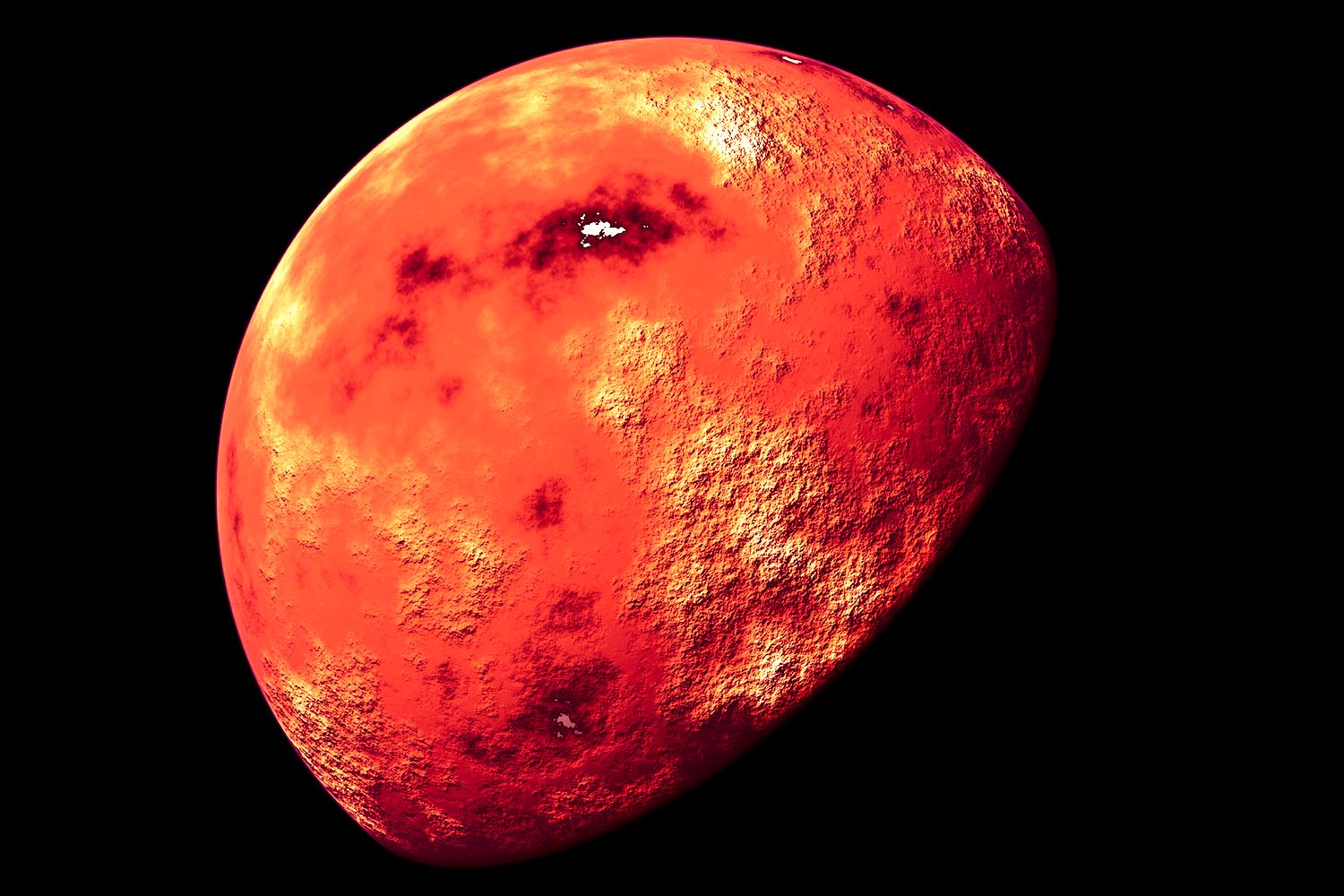
With the most recent data collected from Mars, scientists are suggesting that the Mars atmosphere was once wet and warm, and now they have proof. A team out of the California Institute of Technology and NASA’s Jet Propulsion Laboratory have a very feasible explanation for where all of Mars’s carbon went.

Mars Atmosphere Was Denser than Earth’s 3.8 Billion Years Ago
The team discovered a photochemical process that may have accelerated the evolution of the Mars atmosphere, which was once denser than Earth, and became the arid, carbonless planet it is today. This method, the researchers discovered, is consistent with carbon isotopic measurements that are existent today. The study’s lead author, Renyu Hyu, expresses that a better picture of the Martian atmosphere can now be drawn.
According to the study, there are two plausible explanations for the change in the Martian atmosphere and the decline in carbon dioxide. One reads the CO2 was absorbed into minerals in carbonates, a kind of rock. The second one suggests that the CO2 was simply lost in space.
This is Not the First Study to Draw Such Conclusions About Mars
An earlier research project analyzed data from satellites that orbit around Mars to compile a complete catalog of carbonates in Mars, and their data revealed that a number of carbonates were incredibly lacking in the upper kilometer crust of Mars, but that conditions suggested that there may have been plenty before.
The latest study, published in Nature Communications, took into account the ratio of carbon-12 and carbon-13 in the Mars atmosphere. Both of these carbon isotopes are stable, and contain the same number of protons but different amounts of neutrons and different masses. The team used the measurements of these ratios at several points to try and predict what happened.
Mars Atmosphere through the Eyes of Curiosity
The team took data collected by the Curiosity to check on the Martian atmosphere today, and it has a surprisingly plentiful ratio of carbon-13. This suggests that the way carbon is ejected in Mars is different than what had previously been hypothesized.
It was previously thought that carbon was ejected from Mars through sputtering, but this new study suggests differently. It’s possible that the sun’s ultraviolet light particle hits a CO2 molecule in the atmosphere in Mars and makes it split into carbon monoxide and oxygen. Here the ultraviolet light hits the particles again, and it splits further into atomic carbon and oxygen. This suggests that some carbon particles had enough energy to leave the atmosphere, and possibly, carbon-12 had a higher chance of going into the atmosphere than carbon-13.

















